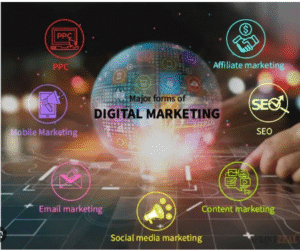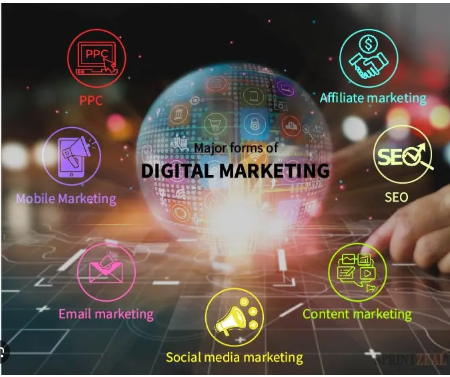Print Marketing’s Future Within a Digital World
Print Marketing’s Future Within a Digital World. Many have questioned the value of conventional media like print as marketing techniques change in a terrain more and more digital. Print marketing is, rather than disappearing, changing.
Companies in cities like Calgary are combining digital innovation with tactile, striking materials to more precisely appeal to consumers. For those embracing digital printing Calgary, print marketing’s future is not just alive but flourishing.

Print is changing rather than dying.
Many believe that internet marketing has made print useless. Print still has footing even if online advertising, email campaigns, and social media are clearly powerful tools. The way it is being applied distinguishes it. Print marketing of today is sharper, more focused, and frequently linked with digital experiences.
For brand recall, printed items such pamphlets, business cards, direct mail, and posters remain powerful. They offer a tactile link not replicable via digital means. Well designed print works are felt, gripped, and recalled rather than only viewed.
The Birth of Digital Printing
What is feasible in the print environment now thanks to digital printing technologies? Digital printing gives faster turnaround times, less minimum quantities, and more customizing than conventional offset printing. This makes it perfect for contemporary marketing plans that call for adaptability and personalizing.
Demand for premium digital print services has expanded quickly in areas like Calgary. Whether it’s variable data printing for customized direct mail campaigns or short-run booklets for an event, companies are using digital printing to produce custom materials without compromising quality.
Customization is the new norm.
Modern consumers demand customized experiences. By means of digital printing, marketers can produce print products that fit particular demographics, tastes, and behavior. Imagine getting a postcard including your name, a product recommendation based on past purchases, and a QR code connecting to a customized landing page.
This form of focused communication closes the distance between print and digital, hence print is becoming more and more engaged in data-driven marketing. Among the most versatile instruments in this field is variable data printing (VDP). It lets one printed piece’s text, graphics, and other aspects be changed across consecutive ones without stopping the process. The outcome is an individualized experience that increases involvement and draws interest.
Print Eco-Friendly Innovation
Consumers as well as companies are starting to give sustainability top attention. Luckily, the print sector is changing to incorporate environmental friendly methods. Print marketing is greener from soy-based inks and energy-efficient printing techniques to recycled paper stocks.
Because it usually generates less waste, digital printing is well suitable for sustainability. Print-on- demand technologies help to lower the demand for big inventory; shorter runs mean less unused materials. Print can still be a component of a sensible marketing plan for companies who are ecologically sensitive.
Combining Digital Channels with Print
Modern marketers are discovering strong methods to combine print and digital, not seeing them as separate realms. Among the methods used to link physical objects with online experiences are QR codes, augmented reality (AR), and near-field communication (NFC).
A printed flier with a QR code, for instance, might link the reader to a product website or video demonstration. Contact information can be immediately added to a smartphone by a business card including an NFC chip. These hybrid interactions increase involvement by combining digital interactivity with the tactile dependability of print.
Print also increases touchpoints, so enhancing digital campaigns. A well-timed postcard or catalog could direct a consumer to a website or serve as a reminder of an online offer. Research shows that multichannel marketing campaigns—which combine digital and print components—often beat single-channel approaches.
Print’s emotional power
Print is unique in a world of continual digital cacophony in terms of emotional impact. Having a well-made brochure or a wonderfully designed mailer gives value and intent. Print seems less flimsy and more intentional than a banner ad or email blast.
According to neuromarketing studies, tactile media can produce emotional reactions and memory recall more successfully than digital media. Printed goods are usually seen as more reliable and people spend more time with them. In brand development, this emotional weight can be really helpful.
The Future Looks Mixed.
Print marketing’s future rests in hybrid approaches as the lines separating physical and digital keep blurbing. Successful companies will be those that understand the strengths of every channel and know how to mix them for best impact.
Print will not fade; rather, it will keep changing alongside digital instruments. Print marketing is being rebuilt for a new age from interactive packaging and individualized direct mail to environmentally responsible materials and short-run on-demand printing.
Including digital printing Calgary into your larger marketing plan will show amazing results whether your project is introducing a new product, developing leads, or fostering brand loyalty. It’s about using both in clever, innovative, and complimentary ways—not about deciding between print and digital.
